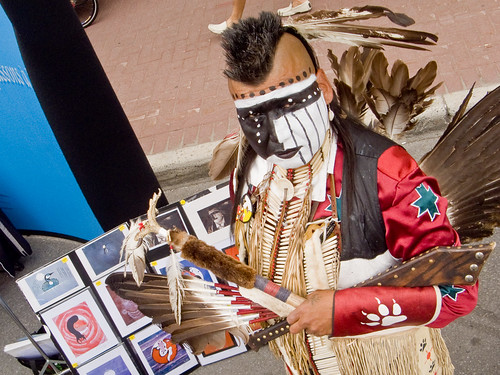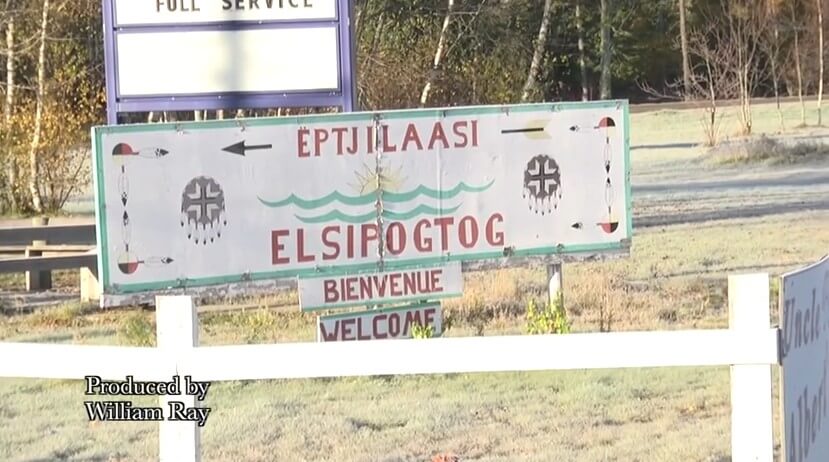 The Mi’kmaq (also spelled Micmac, Miigmaq, Mi’gmaq, Mìgmaq) are a First Nations people, indigenous to the northeastern region of New England, Canada’s Atlantic Provinces, and the Gaspé Peninsula of Quebec. The nation has a population of about 40,000 (plus 21,429 in the Qalipu First Nation), of whom nearly 11,000 speak the Míkmaq language.
The Mi’kmaq (also spelled Micmac, Miigmaq, Mi’gmaq, Mìgmaq) are a First Nations people, indigenous to the northeastern region of New England, Canada’s Atlantic Provinces, and the Gaspé Peninsula of Quebec. The nation has a population of about 40,000 (plus 21,429 in the Qalipu First Nation), of whom nearly 11,000 speak the Míkmaq language.
The Mi’kmaq historically referred to themselves as Lnu, but used the term níkmaq (my kin) as a greeting. The French initially referred to the Míkmaq as Souriquois and later as Gaspesiens or (through English) “Mickmakis”. The British originally referred to them as Tarrantines.
The Mi’kmaw territory was divided into seven traditional “districts”. Each district had its own independent government and boundaries. The independent governments had a district chief and a council. The council members were band chiefs, elders, and other worthy community leaders. The district council was charged with performing all the duties of any independent and free government by enacting laws, justice, apportioning fishing and hunting grounds, making war, suing for peace, etc.
The Seven Mi’kmaq Districts are Kespukwitk, Sikepnékatik, Eskíkewaq, Unamákik, Piktuk aqq Epekwitk, Sikniktewaq, and Kespékewaq.
In addition to the district councils, there was also a Grand Council or Santé Mawiómi. The Grand Council was composed of “Keptinaq”, or captains in English, who were the district chiefs. There were also Elders, the Putús (Wampum belt readers and historians, who also dealt with the treaties with the non-natives and other Native tribes), the women council, and the Grand Chief. The Grand Chief was a title given to one of the district chiefs, which was usually from the Mi’kmaq district of Unamáki or Cape Breton Island. This title was hereditary and usually went to the Grand Chief’s eldest son. The Grand Council met on a little island on the Bras d’Or lake in Cape Breton called “Mniku”, on a reserve today called Chapel Island or Potlotek. To this day, the Grand Council still meets at the Mniku to discuss current issues within the Mi’kmaq Nation.
The Mi’kmaq were members of the Wapnáki (Wabanaki Confederacy), an alliance with four other Algonquian-language nations: the Abenaki, Penobscot, Passamaquoddy, and Maliseet. The allied tribes ranged from present-day New England in the United States to the Maritime Provinces of Canada.
Text adapted from Wikipedia’s article on the Mi’kmaq Peoples



